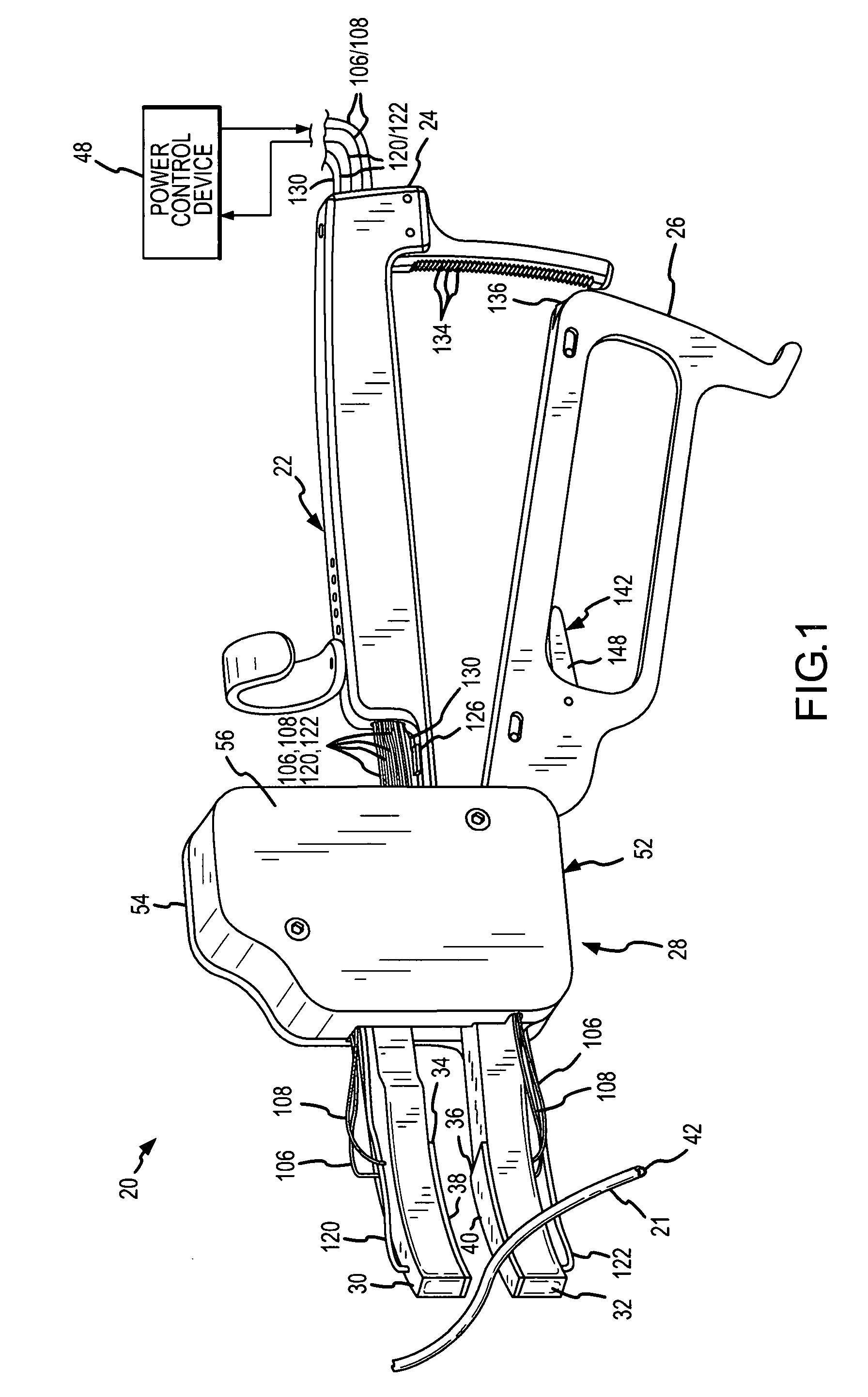Apparatus and method for rapid reliable electrothermal tissue fusion and simultaneous cutting
- Summary
- Abstract
- Description
- Claims
- Application Information
AI Technical Summary
Benefits of technology
Problems solved by technology
Method used
Image
Examples
Embodiment Construction
[0064]The present invention is incorporated in an electrothermal apparatus 20 shown in FIG. 1. The electrothermal apparatus 20 is used to fuse or seal biological tissue tissue, such as a vessel 21, while simultaneously cutting or separating the biological tissue, by use of a handpiece or tissue fusion and cutting instrument 22. Proximal handles 24 and 26 of the instrument 22 are moved or squeezed together, which causes a parallel movement mechanism 28 (FIG. 7) of the instrument 22 to move distal arms 30 and 32 of the instrument 22 toward one another with parallel closing movement. Jaws 34 and 36 are attached to the distal end of the arms 30 and 32. Working surfaces 38 and 40 of the jaws 34 and 36 contact, squeeze, force and compress the vessel 21 when the jaws 38 and 40 and the distal arms 30 and 32 move toward one another, as shown in FIG. 2. Before compression, a lumen 42 within the vessel 21 is unobstructed and not occluded as shown in FIG. 3. Movement of the jaws 34 and 36 towar...
PUM
 Login to View More
Login to View More Abstract
Description
Claims
Application Information
 Login to View More
Login to View More - R&D
- Intellectual Property
- Life Sciences
- Materials
- Tech Scout
- Unparalleled Data Quality
- Higher Quality Content
- 60% Fewer Hallucinations
Browse by: Latest US Patents, China's latest patents, Technical Efficacy Thesaurus, Application Domain, Technology Topic, Popular Technical Reports.
© 2025 PatSnap. All rights reserved.Legal|Privacy policy|Modern Slavery Act Transparency Statement|Sitemap|About US| Contact US: help@patsnap.com



